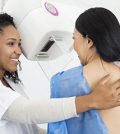- Drive to Be ‘Perfect’ Parent Isn’t Healthy, Survey Finds
- How Bad Was Beethoven’s Lead Poisoning?
- Big Rise in Emergencies Involving Synthetic Weed Among Kids, Adults
- How Mindfulness Could Help Folks Quit Opioids
- Candy Company Recalls Products Due to Salmonella Risk
- Study Finds Heart Damage in ‘Couch Potato’ Kids
- Helping Your Child Make Friends With a Child With Autism
- Planters Peanut Products Under Recall Due to Listeria Risk
- That ‘New Car Smell’ Could Be Toxic Carcinogens
- Gene Discovery Points to a New Form of Alzheimer’s
Births From Fertility Treatments Hit 5 Million Mark: Report

MONDAY, Oct. 14Five million babies have been born using assisted reproductive technologies such as in vitro fertilization since the late 1970s, according to a new study.
The first “test tube baby” was born in 1978, and by 1990 there had been about 90,000 such assisted births worldwide. That number grew to about 900,000 by 2000 and to more than 2.5 million by 2007.
Since 2007, about 2.4 million babies have been born via fertility treatments, according to the study, which is scheduled for presentation Monday at the International Federation of Fertility Societies and American Society for Reproduction Medicine annual meeting in Boston.
“This comprehensive report confirms that we now have over 5 million babies born through assisted reproduction,” IFFS board member Richard Kennedy said in a federation news release. “More than that, it shows that half of them have been born in the last six years. The number of babies born through [assisted reproductive technologies] is now about the same as the population of a U.S. state such as Colorado, or a country such as Lebanon or Ireland. This is a great medical success story.”
Another study presented at the meeting found that retrieving more than 15 eggs from a woman for use in fertility treatments leads to an increased risk of complications, but only a small increase in the likelihood of having a baby.
Researchers analyzed more than 250,000 fertility treatment cycles performed in the United States from 2008 to 2010. They found that removing 16 to 20 eggs instead of 11 to 15 eggs increased the live birth rate from about 39 percent to nearly 43 percent, but raised the risk of a complication called ovarian hyperstimulation syndrome from 0.93 percent to 1.67 percent.
When more than 25 eggs were retrieved, the live birth rate was nearly 42 percent, while the risk of ovarian hyperstimulation syndrome rose to nearly 6.5 percent. The findings suggest that it may be necessary to reevaluate the appropriate number of eggs to collect, the researchers said.
Because the research was presented at a medical meeting, it should be viewed as preliminary until published in a peer-reviewed journal.
More information
The U.S. National Library of Medicine has more about in vitro fertilization.
Source: HealthDay
Copyright © 2024 HealthDay. All rights reserved.










